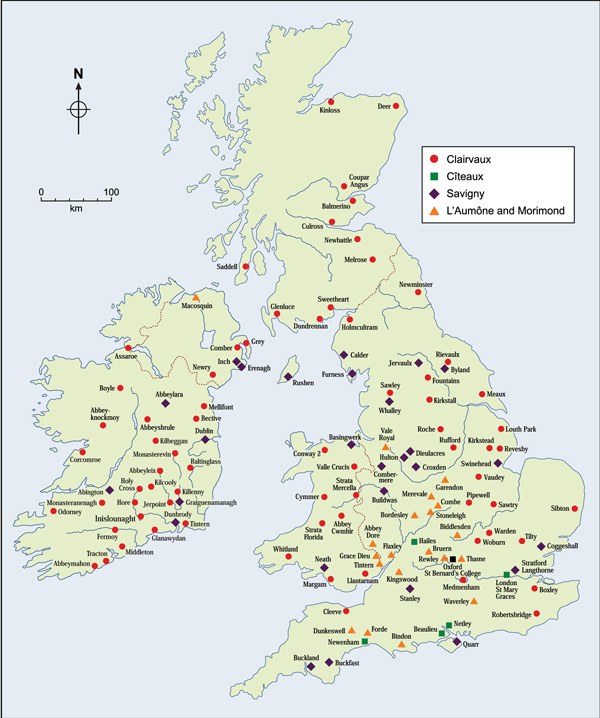 |
 |
 |
 |
 |
 |
 |
|
The Cistercians in Britain (1/2) Ä to sum up all that
has been said or can be said about the Cistercians, they are
today an example for all monks, a mirror for the zealous, and
a gadfly for the easy-going. Of the new religious orders that emerged in twelfth-century Europe, the Cistercians alone secured a firm hold in Britain. They made a phenomenal impact in Yorkshire, where the eight houses established between 1131 and 1150 acted as a seed bed for subsequent foundations in Britain. By the mid-twelfth century the White Monks had spread throughout England, Scotland, Ireland and Wales. They were new, attractive, and had widespread appeal. Those dissatisfied with the state of contemporary Benedictine monasticism were drawn to the simplicity of Cistercian life. Donors, who sought the best spiritual return for their gifts, were impressed by their holiness, poverty and austere life style; the Cistercians’ incorporation of lay-brothers - professed members of the community who engaged in manual work - opened the monastic life in Britain to an area of society previously excluded from organised religion. Whilst the White Monks had a profound effect on spiritual affairs, they touched almost every aspect of medieval life, including the economy, agriculture, industry, and politics.
Map of the Cistercian houses in Britain and Ireland |
